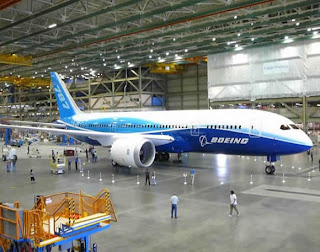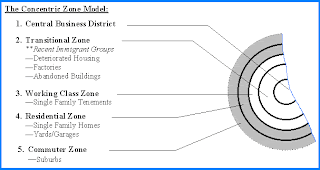With
only one blog post remaining in the quarter, I came to the troubling
realization that I have neither been to a location I am not at least somewhat
familiar with, nor have I utilized Simply Maps (LINK). Under the pressure to
combine these two aspects into a single blog post, coupled with the stresses of
this week’s impending midterm and the fact that Neo-Liberalism confuses me
beyond words forced me to take the easy way out this week. To elaborate, for
this week’s blog post, I decided to stay near UCLA and travel to Beverly Hills,
a location I had only ridden the bus through for a previous blog post, to
explore the presence, or lack thereof, of the hallmarks of the post-metropolis.
Specifically, I used Simply Map’s distribution of clothing and accessory sales
along with clothing and accessory consumption to observe the presence and
effects of hyper-consumerism, cosmopolitanism, decentralization,
multi-centrality and automobility. While I doubt a girl traveling to Beverly
Hills to study shopping trends was exactly what Professor Wilford had in mind
for our blog post visits, the previously complained about culmination of
stressors more or less forced me into a corner. For this reason, I will do my
best to elaborate and conceptualize my observations to mitigate this blog
post’s adventurous and exploratory shortcomings. Without further adieu…
 As
stated above, this week I explored Beverly Hills for the first time, which is
simultaneously surprising, since I consider myself to be quite the fashionista,
and completely expected, since I barely have enough money to park on Rodeo
Drive. Anyways, I ultimately chose Beverly Hills after screwing around on
Simply Maps for awhile. After countless tedious minutes of exploring the many
variables that you can adjust on the website, I found a combination of two that
reflected an embodied a class concept, or, depending on how you look at it,
several class concepts. The variables I chose to explore and compare were the
distribution of clothing and accessory sales in the Los Angeles Metropolitan
Area crossed with the data on clothing and accessory consumption in the Los
Angeles Metropolitan Area. Although these concepts may seem relatively random, they
do in fact relate rather directly to concepts covered in lecture. Specifically,
these concepts relate to the idea of the post-metropolis. Before all you
readers get too impressed that I was somehow able to relate a map of Los
Angeles with the type of city that Los Angeles embodies, give me a chance to
elaborate further on the subject.
As
stated above, this week I explored Beverly Hills for the first time, which is
simultaneously surprising, since I consider myself to be quite the fashionista,
and completely expected, since I barely have enough money to park on Rodeo
Drive. Anyways, I ultimately chose Beverly Hills after screwing around on
Simply Maps for awhile. After countless tedious minutes of exploring the many
variables that you can adjust on the website, I found a combination of two that
reflected an embodied a class concept, or, depending on how you look at it,
several class concepts. The variables I chose to explore and compare were the
distribution of clothing and accessory sales in the Los Angeles Metropolitan
Area crossed with the data on clothing and accessory consumption in the Los
Angeles Metropolitan Area. Although these concepts may seem relatively random, they
do in fact relate rather directly to concepts covered in lecture. Specifically,
these concepts relate to the idea of the post-metropolis. Before all you
readers get too impressed that I was somehow able to relate a map of Los
Angeles with the type of city that Los Angeles embodies, give me a chance to
elaborate further on the subject.
 Let
me start off by describing the map, or the parts that are relevant to my point
at least. The main points of the map I would like to draw attention to are the
facts that both the heavy concentrations of sales and consumption are
scattered, but in differentiated way that eliminates potential confounding
variables, such as geographic or political barriers, and the fact that neither
sales nor consumption match up perfectly across both maps. These are relevant
because they all directly speak to the hallmarks of the post-metropolis. First,
the fact that there are so many concentrations of clothing and accessory stores
in such a relatively small area speaks to the increased sense of consumerism
and cosmopolitanism discussed by Kling, Olin and Poster in their book,
Postsuburban California: The Transformation of Orange County Since World War II. Second, the fact that these sales centers,
and consumption centers are so distributed speaks to the decentralized, and
multi-centralized aspects of the post-metropolis. Thirdly, the fact that these
sales centers are strategically situated around relatively affluent areas, as
made obvious by the fact that they spend a lot of money on clothing and
accessories, speaks to the emergence of the information economy. Finally, the
fact that these areas are so widely distributed reinforces the post-metropolis’
dependency on the automobile.
Let
me start off by describing the map, or the parts that are relevant to my point
at least. The main points of the map I would like to draw attention to are the
facts that both the heavy concentrations of sales and consumption are
scattered, but in differentiated way that eliminates potential confounding
variables, such as geographic or political barriers, and the fact that neither
sales nor consumption match up perfectly across both maps. These are relevant
because they all directly speak to the hallmarks of the post-metropolis. First,
the fact that there are so many concentrations of clothing and accessory stores
in such a relatively small area speaks to the increased sense of consumerism
and cosmopolitanism discussed by Kling, Olin and Poster in their book,
Postsuburban California: The Transformation of Orange County Since World War II. Second, the fact that these sales centers,
and consumption centers are so distributed speaks to the decentralized, and
multi-centralized aspects of the post-metropolis. Thirdly, the fact that these
sales centers are strategically situated around relatively affluent areas, as
made obvious by the fact that they spend a lot of money on clothing and
accessories, speaks to the emergence of the information economy. Finally, the
fact that these areas are so widely distributed reinforces the post-metropolis’
dependency on the automobile. Now, on to my
trip itself. Like a typical touristy first-timer in Beverly Hills I spent the
majority of my time window shopping on Rodeo Drive. I say window shopping both
because I can not afford anything in the Rodeo Drive stores and because there
were several stores that would not even let me in, which is a microcosm of
restricting physical access, but that is beyond the scope of this post. While
the decentralization and multi-centration was obvious throughout the area, as
car dealerships were located together, as were clothing scores, department
stores and supermarkets and the residential areas, the most obvious hallmarks
of the post-metropolis was the overwhelming presence of consumerism and
cosmopolitanism. While consumerism in Beverly Hills is such an obvious
observation it does not even warrant an explanation, I was not prepared for the
near-strictly cosmopolitan nature of this consumerism. This cosmopolitan nature
was seen in both the city and the city’s residents/visitors. In terms of the
city itself, there was an alarming large amount of foreign brand stores,
whether it is clothing or automobiles. To that same extent, the visitors/residents
of the city were also dressed in expensive international brands and drove
almost strictly expensive foreign cars. I saw a Bugatti parked on the street!
Now, on to my
trip itself. Like a typical touristy first-timer in Beverly Hills I spent the
majority of my time window shopping on Rodeo Drive. I say window shopping both
because I can not afford anything in the Rodeo Drive stores and because there
were several stores that would not even let me in, which is a microcosm of
restricting physical access, but that is beyond the scope of this post. While
the decentralization and multi-centration was obvious throughout the area, as
car dealerships were located together, as were clothing scores, department
stores and supermarkets and the residential areas, the most obvious hallmarks
of the post-metropolis was the overwhelming presence of consumerism and
cosmopolitanism. While consumerism in Beverly Hills is such an obvious
observation it does not even warrant an explanation, I was not prepared for the
near-strictly cosmopolitan nature of this consumerism. This cosmopolitan nature
was seen in both the city and the city’s residents/visitors. In terms of the
city itself, there was an alarming large amount of foreign brand stores,
whether it is clothing or automobiles. To that same extent, the visitors/residents
of the city were also dressed in expensive international brands and drove
almost strictly expensive foreign cars. I saw a Bugatti parked on the street! .jpg) Even though I
picked a nearby safe location and wrote about somewhat obvious observations and
concepts, I still feel that I gained a deeper understanding of the Los Angeles
area by (finally) visiting Beverly Hills, which is, hopefully, the point of
these blog posts.
Even though I
picked a nearby safe location and wrote about somewhat obvious observations and
concepts, I still feel that I gained a deeper understanding of the Los Angeles
area by (finally) visiting Beverly Hills, which is, hopefully, the point of
these blog posts.
I’d like to
close by saying, and I am not sucking up for a better grade, that I actually enjoyed
doing these blog posts week in and week out. While most students would be
thrilled on the weeks that they did not have to leave UCLA and could simply
comment on another’s blog, I found those week’s to be somewhat boring and
disappointing. I hope all my readers, yes all 2 of you, enjoyed this project as
much as I did.
.jpg)

.jpg)

.jpg)







